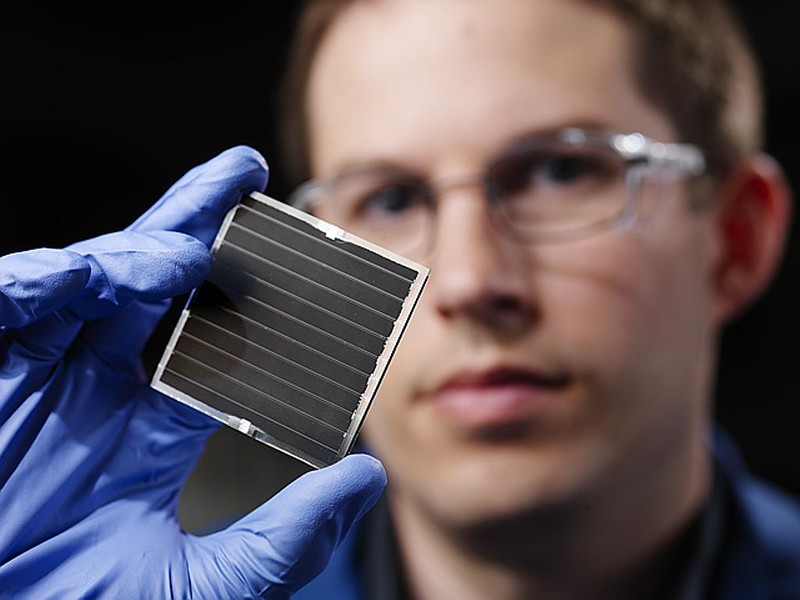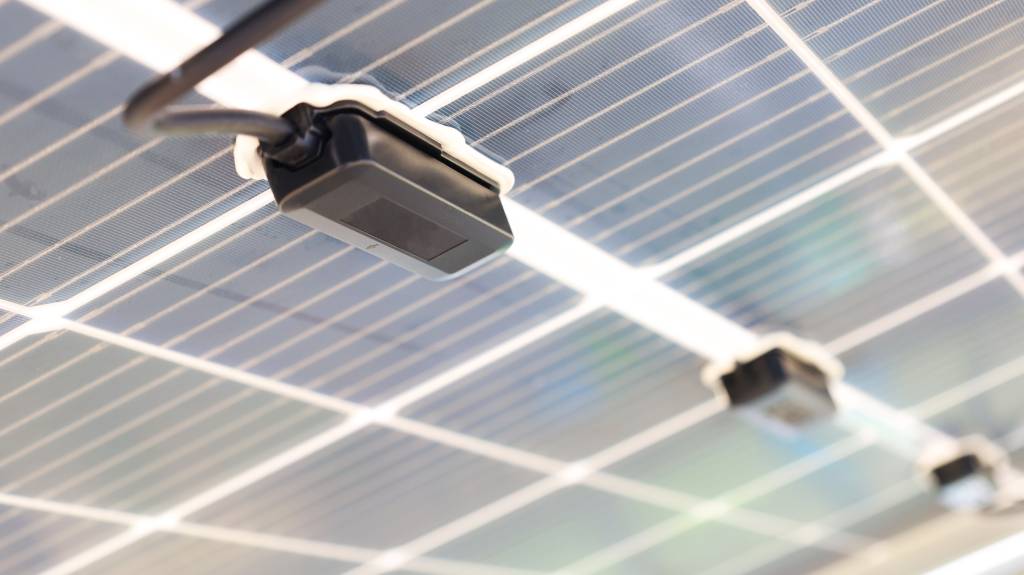In our modern era, the pursuit of sustainability is more than a trend—it’s a necessity. As we confront the pressing issues of climate change and depleting natural resources, the urgency for clean and renewable energy solutions intensifies. Solar panels, representing the pinnacle of eco-conscious technology, offer not just a glimmer of hope but a radiant promise of sustainable energy for generations to come.
Introduction
In a world increasingly defined by sustainability, the quest for clean and renewable energy sources is paramount. Solar panels emerge as a shining beacon in this journey. These seemingly simple sheets, when viewed from afar, are technological marvels. They harness the sun’s limitless energy, transforming it into electricity that powers our homes, businesses, and even some of our vehicles.
If the question, “How do solar panels work?” has ever crossed your mind, you’re about to embark on an enlightening journey. This guide will navigate the intricate mechanisms, avant-garde technologies, and scientific wonders that empower these panels to capture and convert sunlight. As we collectively strive for a cleaner, more sustainable energy future, grasping the essence of solar panels becomes not just captivating but vital.
Basics of Solar Energy
To truly appreciate the marvel of solar panels, one must delve deep into the foundational aspects of solar energy. This journey into the heart of solar energy not only unveils the science behind it but also underscores its significance in our daily lives and the broader context of global energy needs.
Why is the Sun the Ultimate Energy Source?
The sun, an awe-inspiring celestial body, is a powerhouse that radiates an immense amount of energy every single moment. This energy, manifesting as sunlight, bathes our planet, bestowing it with the essential warmth and luminosity that sustains life. It’s the driving force behind the Earth’s climate, the growth of plants, and the rhythm of our days and nights. Beyond these fundamental roles, the sun’s energy holds immense potential. It’s a vast, untapped reservoir of clean and renewable power. Solar panels, with their innovative design and technology, are the instruments we’ve developed to tap into this boundless energy. They stand as testament to human ingenuity, capturing and converting sunlight into usable electricity. Discover the renewable nature of solar energy.
Key Semiconductor Materials in Solar Cells
Solar panels, in their essence, owe their remarkable functionality to the solar cells embedded within them. These cells are predominantly crafted from semiconductor materials, with silicon being the most commonly used. But what makes these materials so special? Semiconductors have a unique property: they can absorb sunlight and release electrons in the process. This release of electrons is the first step in the generation of electric current. As sunlight hits the solar cells, the semiconductor materials get to work, exciting electrons and setting the stage for electricity production—a fascinating phenomenon that combines principles of physics and engineering. As we delve deeper into the world of solar energy, understanding the role of these materials becomes crucial. Dive into the science of photovoltaics.

The Imperative of Solar Energy Basics
Embarking on the solar journey, especially for those contemplating solar panel installation, requires a solid grounding in the basics of solar energy. This foundational knowledge is more than just academic; it’s practical. It offers insights into the efficiency, performance, and potential output of different solar panels. By understanding how solar panels harness the sun’s energy, potential adopters can make informed choices, selecting panels that best suit their needs and environment. Moreover, with the global push towards sustainability and reducing carbon footprints, having a grasp on solar energy basics empowers individuals to contribute positively to this global movement, ensuring they’re equipped with the knowledge to make enlightened and eco-friendly decisions.
The Anatomy of Solar Panels
From a distance, solar panels, especially those installed on residential rooftops, might appear as uniform, monolithic structures. However, a closer look reveals a complex mosaic of intricate components, each meticulously designed and assembled to optimize the sunlight-to-electricity conversion process. For homeowners considering the transition to solar, understanding these components and their interplay can offer valuable insights into the efficiency and potential of their residential solar systems.
Primary Components of a Solar Cell
At the heart of every solar panel lies the solar cell, a marvel of engineering and science. Each solar cell is a multi-layered structure, with each layer serving a distinct purpose. The topmost layer, typically crafted from durable glass, acts as a protective shield, safeguarding the cell from external elements like dust, rain, and even hail. Directly beneath this protective layer are the semiconductor materials, the workhorses of the solar cell. It’s in these layers that the magic happens, where the abundant energy of sunlight is captured and transformed into usable electricity. For homeowners, understanding these components is crucial when comparing various residential solar panel systems, ensuring they select the most efficient and durable option for their homes. Compare various residential solar panel systems.
Layers Within a Solar Cell: Their Significance
The complexity of a solar cell is truly revealed when one delves into the significance of its individual layers. Beyond mere structural components, each layer has a designated, functional role. Some layers, rich in semiconductor materials, act as sunlight sponges, absorbing the sun’s rays with remarkable efficiency. Others are designed to facilitate and orchestrate the movement of electrons, ensuring a smooth flow of electricity. Yet, some layers play the crucial role of directing the generated electricity, ensuring it’s channeled correctly to be used in our homes. For homeowners, understanding these layers and their functions can offer insights into the efficiency, durability, and potential maintenance needs of their residential solar systems. Delve into the layers’ significance.
Diverse Solar Panel Types
Solar panels, especially those designed for residential use, are not a one-size-fits-all solution. They come in a diverse range of types, each tailored for specific needs and environments. The most common varieties include monocrystalline, polycrystalline, and thin-film panels. Each type has its unique set of advantages, efficiencies, and aesthetic appeal. For instance, monocrystalline panels, with their sleek black appearance, might be preferred by homeowners looking for both efficiency and aesthetics. On the other hand, thin-film panels, being flexible, can be ideal for surfaces that aren’t entirely flat. Understanding these differences is pivotal for homeowners to select the best fit for their specific residential needs and aesthetic preferences.
Solar Panels & Your Electricity Bill
Beyond the undeniable environmental benefits, solar panels, especially in a residential setting, offer substantial financial advantages. By producing and consuming your own electricity, you reduce your reliance on the grid. This self-sufficiency can lead to significant reductions in monthly electricity bills. In many regions, net metering policies allow homeowners to sell excess electricity back to the grid, earning them credits or even monetary compensation. Over time, these savings and earnings can offset the initial investment in the solar system, making it not just an eco-friendly choice but also a financially savvy one. For homeowners, this means the potential for increased savings, reduced bills, and even a boost in property value. Learn how solar panels can revolutionize your electricity bills.
Working Principle of Solar Panels
Solar Panels on Residences
Residential solar panels are a testament to the fusion of technology and nature. These panels, often strategically placed on rooftops or in open areas of a property, are designed to capture the maximum amount of sunlight throughout the day. As they absorb sunlight, a series of internal processes kick into gear. The primary function of these panels is to convert sunlight into direct current (DC) electricity. However, most household appliances and systems operate on alternating current (AC) electricity. This is where the inverter comes into play. Acting as a bridge between the solar panels and your home’s electrical system, the inverter transforms the generated DC electricity into AC form, ensuring it’s compatible with your home’s electrical grid.
But what happens when the panels produce more electricity than the household consumes? This surplus electricity has two primary destinations. It can either be fed back into the local electricity grid, often earning the homeowner credits or monetary compensation, thanks to net metering policies in many regions. Alternatively, for homes equipped with battery storage systems, this excess electricity can be stored for later use, ensuring a continuous power supply even when the sun isn’t shining. For homeowners, this means greater energy independence, potential savings, and the satisfaction of harnessing clean, renewable energy. Understand the residential solar panel mechanism.
Nocturnal Solar Panels
Solar panels, by design, rely on sunlight to generate electricity. This raises an intriguing question: What happens when the sun sets? The answer lies in the innovative solutions integrated into modern solar systems. While it’s true that solar panels cease electricity generation after dusk, that doesn’t mean households with solar installations are left in the dark. If the residence is equipped with a battery storage system, the energy stored during daylight hours becomes the primary power source. These batteries release the stored electricity, ensuring that the household remains powered throughout the night.
Furthermore, homes connected to the grid can draw electricity during nighttime, ensuring uninterrupted power. The beauty of this system is its cyclical nature. During the day, excess energy can be stored or returned to the grid, and at night, when solar panels are dormant, the stored energy or the grid supplies the needed electricity. This seamless transition between different power sources ensures that homes with solar installations enjoy consistent, reliable energy around the clock. Explore solar panel functionality during non-sunny hours.
Solar panels, while requiring an initial investment, offer a plethora of financial benefits that can be reaped in the long run. These benefits not only make solar panels an attractive option for homeowners and businesses but also position them as a forward-thinking solution in the ever-evolving energy landscape.

Reduced Electricity Bills: One of the most immediate and tangible benefits of installing solar panels is the drastic reduction in monthly electricity bills. As you generate your own electricity, your reliance on the grid diminishes. Over time, this self-sufficiency can translate to significant savings, especially during peak summer months when electricity consumption is typically higher.
Tax Incentives and Breaks: Many governments and local authorities offer tax incentives to promote the adoption of renewable energy sources. By installing solar panels, homeowners and businesses might be eligible for tax breaks or rebates, further reducing the overall cost of the system. It’s essential to stay updated with local regulations and incentives, as these can significantly offset the initial investment.
Earnings from Surplus Electricity: With net metering systems in place in many regions, homeowners can sell surplus electricity back to the grid. On days when your panels produce more electricity than you consume, this excess power can be fed back into the local electricity network. Depending on the local policies, you might receive credits or even monetary compensation for this contribution, turning your solar panels into a potential source of income.
Increased Property Value: As the demand for sustainable and energy-efficient homes grows, properties equipped with solar panels often see an increase in their market value. Prospective buyers recognize the long-term savings associated with solar-equipped homes, making them willing to pay a premium for such properties.
Protection Against Rising Energy Costs: With the fluctuating costs of fossil fuels and the ever-increasing demand for electricity, energy prices are bound to rise. Solar panels offer a hedge against these unpredictable hikes. By generating your own electricity, you insulate yourself from the volatility of energy markets, ensuring consistent and predictable energy costs.
Energy Yield from Solar Panels
The energy output from solar panels hinges on multiple factors: their efficiency, sunlight exposure, and orientation. Typically, a standard panel can yield between 250 to 300 watts in optimal conditions. Discover the average energy output of solar panels.
Conclusion
Solar panels are not merely sustainable energy tools; they’re a testament to human ingenuity and our commitment to a brighter, greener future. As technological advancements continue to refine their efficiency and affordability, they stand out as a beacon for those aiming to diminish their carbon footprint and electricity expenses. If solar energy beckons you, a deep understanding of its workings can illuminate your path forward.





